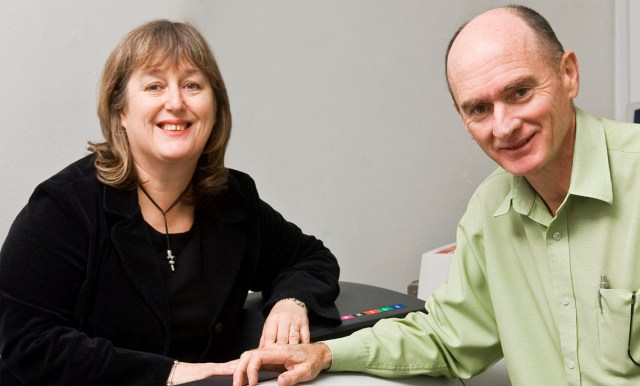
My adventures in the graphic arts industry began more than five decades ago when there were four Beatles and offset printing was viewed with cautious scepticism. Let’s face it, the odds of ink and water sharing the same platform were about as farcical as believing that Australia would ever have a female prime minister.
My first design/print job was to produce a small number of certificates for a group. It necessitated using a 72pt heading which, in the infancy of cold type techniques, offered few solutions. The most obvious, and popular, was to purchase a sheet of Letraset, a dry transfer method of rubbing the required letters from a plasticised sheet onto your artwork.
A 72pt sheet was not cheap and, by accident or design, seemed to include a very limited number of the characters that one wanted to use in any given job. The other problem was that Letraset did not come with a spell-checker, much to my disappointment when the client pointed out that I had misspelt the word honorary.
So, when re-creating the artwork I found that I had run out of the letter ‘o’ and not only had to bear the cost of reprinting the job, but had to purchase yet another sheet of Letraset, simply to obtain one letter.
Thankfully, technology, stagnant for almost 500 years (excluding automation), was accelerating at a pretty reasonable pace in the early 1970s and Letraset gave way to photo typesetting which ultimately became digitised before becoming computerised, and ultimately no-one needed Letraset, and you could not give away the hundreds of partly used alphabets that were once the backbone of any design studio.
My journey since has included significant financial contributions to the resellers of Compugraphic, Linotype, Apple, Canon, Xerox, Agfa and Océ, not to mention the cost of ancillary add-ons such as folders, staplers, guillotines, slitters, drills and binding devices – and many other names I cannot recall right now.
In the course of our evolution, trade typesetting morphed into digital printing. Eight imagesetters and a myriad of digital presses later, we found ourselves in 2014 in the peculiar situation of having paid off all our apparatus, a hitherto unknown phenomena.
I could have been disappointed in late 2015 when the supplier of our one remaining (A1) imagesetter informed us that their company would no longer be supporting the maintenance of the machine, though in all fairness, its 18 years of faithful service had seen it produce enough film to stretch from Sydney to Canberra – and possibly some of the way back. And while its contribution to the bottom line is still noticeable on the balance sheet, if we had to send it out to pasture there would be small cause for remorse.
The two mainstay machines of our operation are a black and white digital press which sits in parallel with a monster of a colour press. For five painstaking years, all of them during the global financial crisis, we had to find $20,000 each month in order to ultimately own them. Add the mandatory click charge to that and it becomes pretty obvious why the overdraft took an absolute battering, along with personal savings and any other means needed to survive in small business in tough times.
Move forward two years to February 2016 and things are looking pretty bright. No press payments and a steady workflow has put the business on a sound financial footing and the future looks bright.
Well, it did until yesterday anyway, when the supplier of the black and white machine gave us 17 working days notice that it would no longer be able to support the machine on a contracted basis, ‘due to the costs associated with supporting ageing equipment’.
A bit rich I think, given that we are talking about a heavy duty high cycle machine which is still available from the same supplier (albeit with an X or something added to its name) and from which they have profited exceptionally well during the seven years of its placement.
I too am in the category of ‘ageing equipment’ – a milestone three score years and ten birthday approaching at twice the speed of light – and I have no desire to re-enter the murky waters of financing another press.
So I rang the 1300 number indicated in the letter I received which suggested I ask to speak to my account manager.
I am in Adelaide. The 1300 number gets me in touch with someone in Melbourne. In accordance with the letter, I asked to speak to my account manager, and he asked me who is my account manager. Now, I rather assumed that they might know the answer to that one, because I don’t.
After two silent minutes while he attempted to find out who my account manager is, I was told he will have to get back to me. Two-seventeenths of my allotted remaining time has passed, and still I am without an account manager. Perhaps something awful has happened to him. Perhaps, like my machine, the costs associated with an account manager can no longer be borne by the company?
Or perhaps I should have dialled 1300 WHO?
Whatever the ultimate outcome, I suspect I am the loser, no longer privy to maintenance and consumables included in my click charge, and at the mercy of a multi-national who can charge me whatever they think is profitable, regardless of my thoughts on the matter. Which are pretty obvious.
Interestingly, they still have not responded to my request for an account manager to contact me so I can ascertain what the new arrangement will be, which all adds up to pretty disgusting treatment of a loyal client.
Heaven help me if the supplier of the colour press ever gets wind of this and send me the same letter.
Although I do know who my account manager is at that company.
Comment below to have your say on this story.
If you have a news story or tip-off, get in touch at editorial@sprinter.com.au.
Sign up to the Sprinter newsletter

